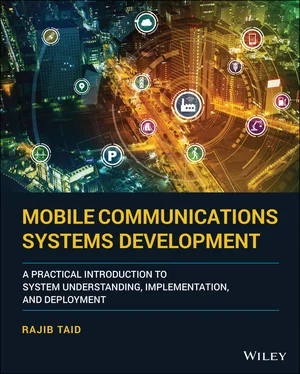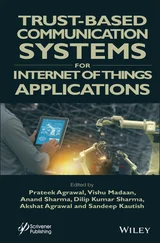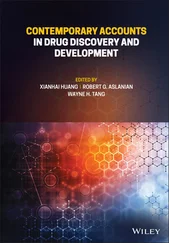This book is an overview and may not contain exhaustive descriptions or information on various individual components and protocols of a mobile communications system based on the GSM, GPRS, UMTS, LTE, and 5G system. The book attempts to provide the reader with an overall background of the various aspects of an end‐to‐end system development based on the available mobile communication technologies and systems. This book reflects the author's 12 years of experience with a full lifecycle of software research and development, deployment, testing, operation, and maintenance in the areas of mobile communication, Radio Access Network (RAN), and Core Network (CN) domain deployed across the available platforms, including satellite‐based mobile communications systems.
Who should use this book?
Mobile Communications System Development: An Introduction to Practical Approach for Systems Understanding, Implementation , and Deployment is primarily for students who have just graduated in either computer science or electronics and communications discipline and is looking for an exciting career in the mobile communications domain. It is also appropriate for students currently studying in the above‐mentioned disciplines and looking for project work assignments as a part of the academic curriculum in the mobile communication domain. An experienced person from another software domain can also go through this book for a career reboot into the mobile communication domain.
How to use this book?
Mobile communications systems protocol layers, their functions and procedures, and other related information, such as referring to figures, being presented may be brief in nature. For further details about the underlying protocols along with the materials being presented here, the concerned 3GPP technical specification(s) on its website ( www.3gpp.org) [1] must be referred to while going through a chapter of this book. The concerned 3GPP technical specifications numbers are mentioned in the References section of the book. The reader is advised to refer to the mentioned 3GPP technical specification and the section number for complete information on the described protocol functions and procedures. Familiarity with the 3GPP website is also important as the reader will be required to visit it quite often to refer to its technical specifications.
Structure of this book
Overall, this book is divided into four parts, each containing several chapters. Each part begins with introductory objectives and also mentions the purposes of each chapter under it. Each chapter is followed by its summary. Also, the book starts with an introductory chapter that provides a brief description of the career opportunities offered by mobile communications systems and network ecosystems.
Part IIntroduction
This part contains eight chapters containing the background and introductory aspects and areas of mobile communications systems and networks based on GSM, GPRS, UMTS, LTE, and 5G systems. The materials presented in this part are general in nature but applicable across the mobile communications systems and networks. Even if a reader is starting a career in the LTE or 5G system and network, as a developer or O&M person, one has to know the major key concepts from the legacy GSM/UMTS networks as well.
Part IIOperation and Maintenance
This part contains three chapters covering various aspects and areas of the troubleshooting and resolution of mobile communications systems and network issues.
Part IIIDevelopment of Mobile Communications Systems
This part contains four chapters covering various aspects and areas of the development of mobile communications systems protocol stack and layers based on the 3GPP standards and their technical specifications. This part also describes hardware platforms to be used for the development of mobile communications systems network elements.
Part IV5G System and Network
This part contains seven chapters covering various aspects and areas of a 5G system and network based on its first Release 15 as standardized by the 3GPP. Also, an overview of the enhancements made into the existing features of the 3GPP Release 15 and the addition of new services or capabilities which have been added as part of the 3GPP Release 16 and Release 17 are covered in this part.
Dibrugarh, Assam, India
Rajib Taid
I thank my dear friends and colleagues for offering encouragement and valuable comments during the preparation of this book. During my time in Hughes Software Systems (now known as Aricent, located in Gurgaon, India), I had the opportunity to work with very smart and talented people who were generous in sharing their knowledge and experience. Special thanks also go to Mr. Sumit Kasera (AVP, Technology at Aricent, Gurgaon, India) for his valuable feedback on this book.
I would also like to thank 3GPP for permitting me to reproduce a few snapshots from the concerned 3GPP technical specifications.
I would also like to thank and appreciate John Wiley & Sons Ltd., UK, and its acquisition, editorial, production, and publishing staff, for their continuous support and cooperation during the entire process of this book’s production.
Here are the glossaries of some of the terms used in this book for ready references. For a complete list of terms and their definitions, please refer to the 3GPP TR 21.905 [24].
3G/4G/5G3rd /4th/5th Generation 3GPPThird Generation Partnership Project 5GS5G System 5G‐GUTI5G Globally Unique Temporary Identifier 5G‐S‐TMSI5G S‐Temporary Mobile Subscription Identifier 5GC5G Core Network A‐bisA‐bis Interface ACKAcknowledged Mode AKAAuthentication and Key Agreement AMFAccess and Mobility Management Function AMPAsymmetric Multicore Processing APApplication Protocol APNAccess Point Name AFApplication Function ARFCNAbsolute radio‐frequency channel number ARQAutomatic Repeat Request ASAccess Stratum ASN.1Abstract Syntax Notation One AuCAuthentication Center AUSFAuthentication Server Function BCFBase Control Function BCHBroadcast Channel (Transport) BCCHBroadcast Control Channel (Logical) BICNBearer‐Independent Core Network BICN BISTBuilt‐in self‐test (BIST) BSBase station BSCBase station controller BSNBlock Sequence Number BSSBase Station Subsystem BSSGPBase Station System GPRS Protocol BSSMAPBase Station Subsystem Mobile Application Part BSPBoard Support Package BSRBuffer Status Report BTSBase Transceiver Station BWPBandwidth Part C‐RNTICell Radio‐Network Temporary Identifier CBGCode block group CBGFICBG flush indicator CCCall Control CCEControl Channel Element CCCH/DCCHCommon/Dedicated Control Channel CC /CMCall Control/Connection Management CMConnection Management CNCore Network CORESETControl Resource Set CRBCommon Resource Block CRCCyclic redundancy check CRICSI‐RS Resource Indicator CSIChannel State Information CSI‐RSChannel State Information Reference Signal CS‐RNTIConfigured scheduling RNTI CSI‐RSRPCSI Reference Signal Received Power CSI‐RSRQCSI Reference Signal Received Quality CSI‐SINRCSI Signal‐to‐Noise and Interference Ratio CSFBCircuit‐switched Fall‐back CPCyclic Prefix CPSCall per second CQIChannel Quality Indication CSCircuit‐switched CSNConcrete Syntax Notation DCIDownlink control information DL‐SCH/UL‐SCHDownlink/Uplink Shared Channel DM‐RSDemodulation reference signals DNData Network DNNData Network NameDRBData Radio Bearer DSPDigital Signal Processor DTAPDirect Transfer Application Part DTCHDedicated Traffic Channel eMBBEnhanced Mobile Broadband EAPExtensible Authentication Protocol ECMEvolved Packet System Connection Management EDGEEnhanced Data for Global Evolution EGPRSEnhanced General Packet Radio Service eNodeBEvolved NodeB EIREquipment Identity Register EMMEvolved Packet System Mobility Management EN‐DCE‐UTRA NR Dual‐Connectivity EPCEvolved Packet Core EPSEvolved Packet System ESMEvolved Packet System Session Management ETSIEuropean Telecommunications Standards Institute E‐UTRAEvolved‐UMTS Terrestrial Radio Access E‐UTRANEvolved‐UMTS Terrestrial Radio Access Network FDDFrequency Division Duplex FRFrame Relay FR1Frequency Range 1 (5G) FR2Frequency Range 2 (5G) FTPFile Transfer Protocol FWFramework GBRGuaranteed Bit Rate GERANGPRS Edge Radio Access Network GGSNGateway GPRS Support Node GMSCGateway Mobile Switching Center gNB/gNodeB5G Base Station GPRSGeneral Packet Radio Service GSMGlobal System for Mobile Communication GUAMIGlobally Unique AMF ID GUMMEIGlobally Unique MME Identifier HARQHybrid Automatic Repeat Request HLR/HSSHome Location Register/Home Subscriber Server HS‐DSGHigh Speed Downlink Shared Channel HSDPAHigh‐Speed Downlink Packet Access HSPAHigh‐Speed Packet Access HSUPAHigh‐Speed Uplink Packet Access IABIntegrated Access and Backhaul IDNNSIntra Domain NAS Node Selector IEInformation Element IEIInformation Element Identifier IMSIP Multimedia Subsystem IMSIInternational Mobile Subscriber Identity INT‐RNTIInterruption RNTI IOTInter‐operability Testing IPInternet Protocol IPCInter Process Communication IPHIP Header Compression ISIInter Symbol Interference ISRIdle State Signaling Reduction IWFInterworking Function K AMSELTE Key Access Security Management Entity KPIKey Performance Identifier L1….LnLayer 1….n LAILocation Area Identification LCIDLogical Channel Identifier LDPCLow Density Parity Check LLCLogical Link Control LILayer Indicator LSBLeast Significant Bit LTELong‐term Evolution mMTCMassive Machine Type Communications mIoTMassive Internet of Things MACMedium Access Control MANOManagement and Orchestration MCCMobile Country Code MCSModulation and coding scheme MIBMaster Information Block MIMOMultiple‐Input Multiple‐Output MMMobility Management MMEMobility Management Entity MMECMME Code MMSMultimedia messaging service MNMaster Node MNCMobile Network Code MOCMobile‐originated voice call MOCNMulti‐operator Core Network MSMobile station MSBMost Significant Bit MSCMobile Switching Center MSC ‐SMSC Server MSINMobile Subscriber Identification Number MU‐MIMOMulti‐User MIMO N3IWFNon‐3GPP Inter‐working Function NACKNegative Acknowledgment NASNon‐access Stratum NEFNetwork Exposure Function NFNetwork Function NFVNetwork Functions Virtualization NGAPNext Generation Application Protocol NG‐RANNext Generation Radio Access Network Non‐GBRNon‐Guaranteed Bit Rate NNSFNAS Node Selection Function NRFNetwork Repository Function NSANon‐Standalone NRNew Radio NRFNetwork Repository Function NSSAINetwork Slice Selection Assistance Information NSSFNetwork Slice Selection Function NSAPINetwork Service Access Point Identifier NSSNetwork Subsystem OFDMOrthogonal Frequency Division Multiplexing OFDMAOrthogonal Frequency Division Multiplexing Access O&MOperation and Maintenance PBCHPhysical Broadcast Channel PCHPaging Channel PCFPolicy Control Function PCOProtocol Configuration Options PCRFPolicy Charging and Restriction Function PCUPacket Control Unit PCFICHPhysical Control Format Indicator Channel PDCCHPhysical Downlink Control Channel PDCPPacket Data Convergence Protocol PDSCHPhysical Downlink Shared Channel PDProtocol Discriminator PDSCH/PUSCHPhysical Downlink/Uplink Shared Channel PDNPacket Data Network PDUProtocol Data Unit PDPPacket Data Protocol PEIPermanent Equipment Identifier PERPacket Error Rate PLMNPublic Land Mobile Network PFCPacket Flow Context PGWPacket Data Network Gateway PHICHPhysical HARQ Indication Channel PMIPrecoding‐Matrix Indicator POSTPower‐on self‐test PRACHPhysical Random‐Access Channel PRBPhysical Radio Block P‐RNTIPaging RNTI PSPacket Switched PSSPrimary Synchronization Signal PSTNPublic Switched Telephone Network PTIProcedure Transaction Identity PTRSPhase‐tracking Reference Signal PUCCHPhysical Uplink Control Channel PUSCHPhysical Uplink Shared Channel QAMQuadrature Amplitude Modulation QCIQoS Class Identifier QFIQoS Flow ID QoSQuality of Service QPSKQuadrature Phase Shift Keying RABRadio Access Bearer RAIRouting Area Identification RACRouteing Area Code RANRadio Access Network RA‐RNTIRandom Access RNTI RACHRandom Access Channel RATRadio Access Technology RBResource Block REResource Element RBGResource Block Group RFRadio Frequency RIRank Indicator RAURouting Area Update REGResource Element Group RLCRadio Link Control RFRadio Frequency RIVResource Indication Value RNARAN‐based Notification Area RNAURAN‐based Notification Area Update RNSRadio Network Subsystem RNCRadio Network Controller RNLRadio Network Layer RNTIRadio Network Temporary Identifier RoHCRobust Header Compression RRRadio Resource RRCRadio Resource Control RSReference Signal RSRPReference Signal Received Power RSRQReference Signal Received Quality RRMRadio Resource Management RTOSReal‐Time Operating System S1‐APS1 Application Protocol SAStandalone Mode SAPService Access Point SAPIService Access Point Identifier SBAService‐based Architecture SBIService‐based Interface SCPService Communication Proxy SCTPStream Control Transmission Protocol SDAPService Data Application Protocol SDCCHStandalone Dedicated Control Channel SDNSoftware Defined Networking SDUService Data Unit SDSlice Differentiator SEAFSecurity Anchor Functionality SEPPSecurity Edge Protection Proxy SFNSystem Frame Number SFI‐RNTISlot Format Indication RNTI SGSNServing GPRS Support Node SIBSystem Information Block SLAService‐Level Agreement SMPSymmetric Multicore Processing S‐GWServing Gateway SISkip Indicator/System Information SMSession Management SMSShort Messaging Service SMFSession Management Function SNRLC Layer PDU Sequence Number SNSecondary Node SNDCPSubnetwork Dependent Convergence Protocol S‐NSSAISingle Network Slice Selection Assistance Information SNPNStandalone Non‐Public Network SSCSession and Service Continuity SSTSlice/Service Type SPSSemi‐persistent Scheduling SRScheduling Request SRVCCSingle Radio Voice Call Continuity SRBSignaling radio bearers SRSSounding reference signal SSBSynchronization Signal Block SSSSecondary Synchronization Signal SSSupplementary Services SS/PBCHSynchronization Signal Physical Broadcast Channel SS‐RSRPSS Reference Signal Received Power SS‐RSRQSS Reference Signal Received Quality SS‐SINRSS Signal‐to‐Noise and Interference Ratio STLStandard Template Library SU‐MIMOSingle‐User MIMO SUCISubscription Concealed Identifier SUPISubscription Permanent Identifier TACTracking Area Code TAUTracking Area Update TCHTraffic Channel TCP/IPTransmission Control Protocol/Internet Protocol TDDTime Division Duplex TITransaction Identifier TFTTraffic Flow Template TNLTransport Network Layer TPCTransmit Power Control TRXTrans‐receiver TSTimeslot TTITransmission Time Interval UCIUplink Control Information UDMUnified Data Management UDPUser Datagram Protocol UDRUnified Data Repository UEUser Equipment UmGSM Air Interface UMLUnified Modeling Language UMTSUniversal Mobile Telecommunication System UuUMTS/LTE Air Interface UPFUser Plane Function UTRANUMTS terrestrial radio access network UMTS URLLCUltra Reliable and Low Latency Communications UUIDUniversally Unique Identifier VLRVisitor Location Register VoLTEVoice over LTE VRBVirtual Resource Block WCDMAWideband Code Division Multiple Access (UMTS) Xn‐CXn‐Control plane Xn‐UXn‐User plane XnAPXn Application Protocol
Читать дальше












